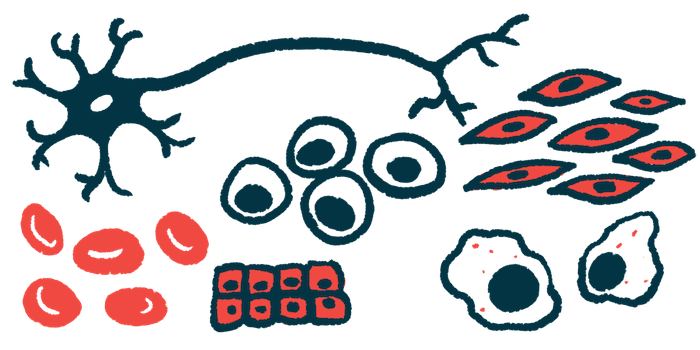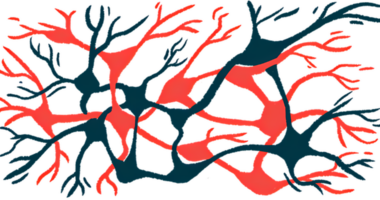Suppressing Enzyme Synuclein Nitrase Could Lead to New Therapies
Blocking enzyme led to reduction in toxic clumps of alpha-synuclein protein

Nitrase Therapeutics showed suppressing the activity of an enzyme called synuclein nitrase reduces toxic clumps of the alpha-synuclein protein and normalizes the electrical activity of dopamine-producing, or dopaminergic, neurons derived from Parkinson’s patients.
The accumulation of toxic alpha-synuclein clumps is the underlying cause of the progressive death of dopaminergic neurons seen in Parkinson’s patients.
“Knocking out Synuclein Nitrase in [matured] dopaminergic neurons improves two key [features] that are dysregulated and implicated in Parkinson’s disease progression – neuronal electrical activity and solubility of synuclein,” Irene Griswold-Prenner, PhD, Nitrase’s founder and chief scientific officer, said in a company press release. “These data demonstrate that targeting Synuclein Nitrase could serve as a novel disease-modifying therapeutic for patients with Parkinson’s disease.”
The findings were presented by Nitrase in the poster “Modulation of dopamine neuron activity by a novel enzyme catalyzing synuclein nitration,” at Neuroscience 2022, the annual meeting of the Society for Neuroscience, held Nov. 12–16 in San Diego.
In Parkinson’s disease, the alpha-synuclein protein abnormally aggregates into toxic clumps, leading to the death of neurons that produce dopamine — a chemical messenger involved in nerve cell communication.
Previous work by Nitrase led to the identification of synuclein nitrase, an enzyme that regulates alpha-synuclein nitration and accumulation in dopaminergic neurons. Nitration refers to a chemical modification of proteins that is associated with cellular stress and can change that protein’s structure, function, and localization.
A nitrated form of the protein was detected in salivary gland tissue of Parkinson’s patients and found at higher levels in patients’ cerebrospinal fluid, the liquid surrounding the brain and spinal cord. Also, injection of nitrated synuclein into rodents was shown to result in disease-associated features in dopaminergic neurons.
Nitrase has received two awards from the Michael J. Fox Foundation for Parkinson’s Research to advance its work on synuclein nitrase as a potential biomarker and therapeutic target of Parkinson’s.
Evaluating blocking synuclein nitrase in dopaminergic neurons
In the current study, the company’s researchers evaluated the effects of blocking synuclein nitrase in lab-grown dopaminergic neurons derived from induced pluripotent stem cells (iPSCs) of people with familial Parkinson’s and healthy people.
iPSCs are generated by collecting mature cells — usually cells isolated from skin samples — and reprogramming them into stem cells, which can differentiate into virtually any other cell type in the body under the right conditions.
The researchers first found that dopaminergic neurons derived from Parkinson’s patients presented an electric activity pattern distinct from those derived from healthy people. This abnormal pattern was characterized by higher electric activity and a reduced synchronization between neurons. Synchrony means neurons are active at the same time or at related times.
When researchers eliminated synuclein nitrase, the electric activity of patient-derived dopaminergic neurons was reduced to levels comparable to those of neurons derived from healthy people. Synuclein nitrase deficiency increased the synchrony of neurons derived from both Parkinson’s patients and healthy people.
These findings show important electrical activity deficits in dopaminergic neurons derived from familial Parkinson’s patients that can be normalized by blocking synuclein nitrase.
The researchers now are evaluating the effects of synuclein nitrase suppression on these neurons’ function and survival in normal conditions and in response to stressful stimuli.
Also, the elimination of synuclein nitrase reduced alpha-synuclein accumulation into insoluble aggregates inside lab-grown dopaminergic neurons treated with alpha-synuclein pre-formed fibrils that are known to promote further aggregation. Fibrils are the longer and insoluble clumps of alpha-synuclein.
“These studies establish that reducing Synuclein Nitrase levels can reduce electrophysiological deficits and insolubility of synuclein” in dopaminergic neurons derived from Parkinson’s patients, according to the release.
“Our results provide a functional rationale for the development of small molecule inhibitors of Synuclein Nitrases as potential novel disease-modifying therapeutics for [Parkinson’s disease] patients,” the researchers wrote.







